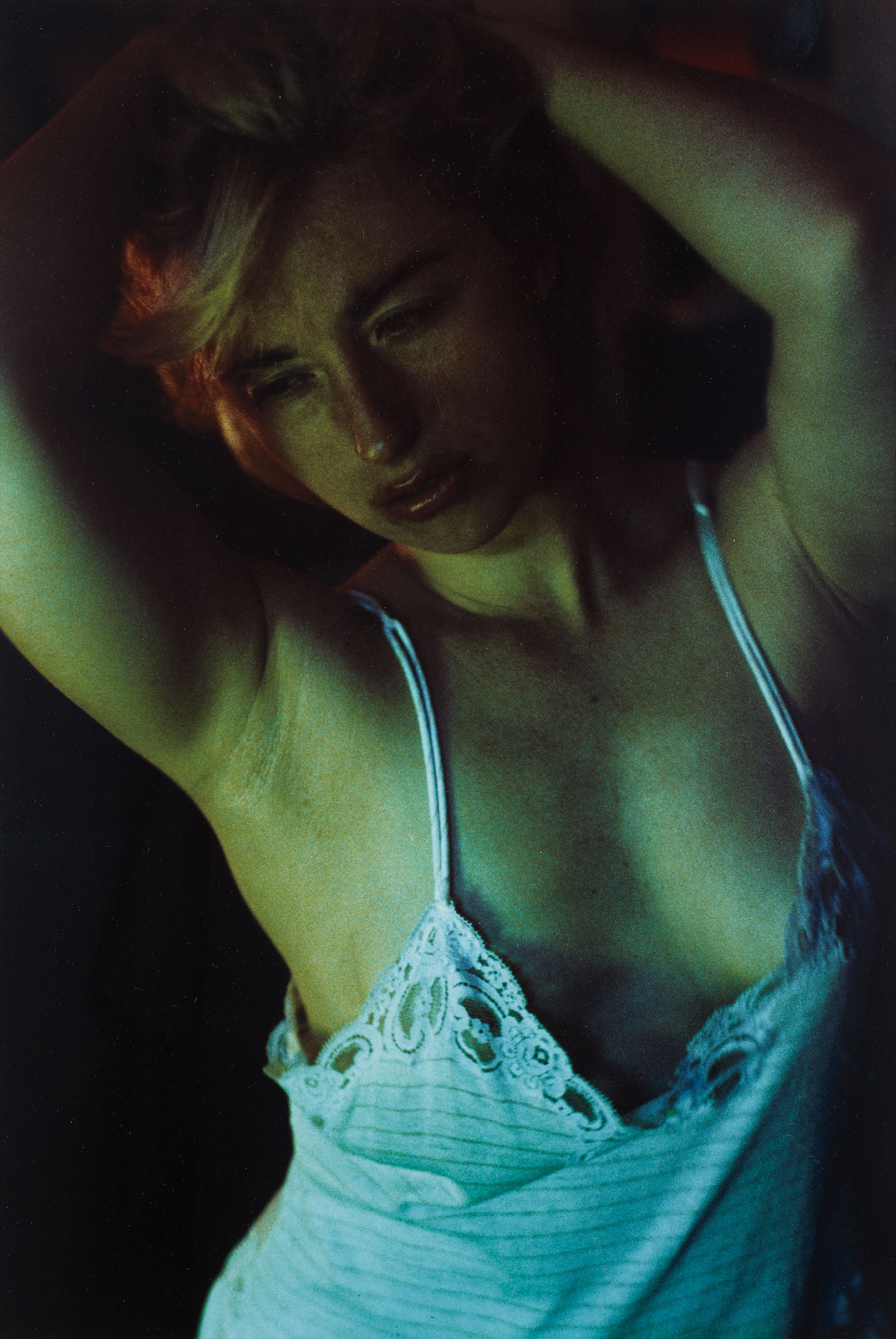

14
Cindy Sherman
Untitled #103
Full-Cataloguing
Cindy Sherman broke into the collective American conscious in the late 1970s with the Untitled Film Stills. As her first mature body of work, the Film Stills deftly explored the prepackaged identities available to women in media, advertising and cinema at the time. Drawing inspiration from B-movies, horror flicks and the film noir genre, over the course of three years Sherman produced sixty-nine images of female stereotypes—cliché depictions of readily familiar roles. As one of the few female artists working in photography at the time, Sherman repudiated what she believed to be the patriarchal dominance in the art world—art produced by male artists, sold by male art dealers and collected by male collectors. Therefore, by assuming the role of photographer, producer and director, Sherman assumed three traditionally-male roles in the production and propagation of female types, and reversed the power dynamic. Furthermore, by assuming the role of the protagonist, Sherman was able to repossess control of the manner in which women were depicted. Forty years later, Sherman’s work is still considered a groundbreaking feminist oeuvre of empowerment.
During the first years of the 1980s, Sherman built on her previous exploration of women’s roles in society with multiple bodies of work, from the rear screen projections to the centerfolds and as seen in the current lot, her vertical portraits, which were noted for their close-ups and deeply intimate air. In Untitled #103, at first glance Sherman holds her arms over her head in a potentially submissive role. She appears to pull her hair back casually, as if spontaneously posing in the presence of a lover. Her lips are glossed and lightly parted, her gaze is soft and she is scantily clad, perhaps more so than any other work by Sherman. The dim lighting alludes to an intimate setting, perhaps a bedroom. Indeed, an initial reading of the image would imply that the role that Sherman appears to embody is that of a girlfriend or a seductress.
However, a more prolonged introspection complicates the aforementioned conclusion. The image is marked by a grainy air that implies that viewers are catching a glimpse of Sherman through the prying lens of a telescope. Furthermore, while her lips are glossed she does not wear makeup, and her top, while revealing, does not hug the contours of her body, alluding to a casualness in which the subject had let her guard down. Collectively, these imply that Sherman’s character, in fact, is not in the presence of a lover, but rather spied on. The viewers are consequently turned from pleasured participants into active voyeurs as Sherman’s role is intentionally complicated. By doing so, Sherman successfully presents an image that begets questions not only about the narrow selection of easily recognizable personas for women in society but also of the viewers’ role in perpetuating them for their own enjoyment. In an interview with Sherman for the Journal of Contemporary Art, Therese Lichtenstein noted, “By self-consciously watching ourselves watching, by catching ourselves in the act, we interrupt the gazes of voyeurism, fetishism, and even narcissism. We are no longer invisible voyeurs but active participants in critical viewing.” Indeed, the genius in Sherman’s work is not merely in what she portrays about her character but what that reveals about the viewers.
Cindy Sherman
American | 1954Seminal to the Pictures Generation as well as contemporary photography and performance art, Cindy Sherman is a powerhouse art practitioner. Wily and beguiling, Sherman's signature mode of art making involves transforming herself into a litany of characters, historical and fictional, that cross the lines of gender and culture. She startled contemporary art when, in 1977, she published a series of untitled film stills.
Through mise-en-scène and movie-like make-up and costume, Sherman treats each photograph as a portrait, though never one of herself. She embodies her characters even if only for the image itself. Presenting subversion through mimicry, against tableaus of mass media and image-based messages of pop culture, Sherman takes on both art history and the art world.
Though a shape-shifter, Sherman has become an art world celebrity in her own right. The subject of solo retrospectives across the world, including a blockbuster showing at the Museum of Modern Art, New York, and a frequent exhibitor at the Venice Biennale among other biennials, Sherman holds an inextricable place in contemporary art history.